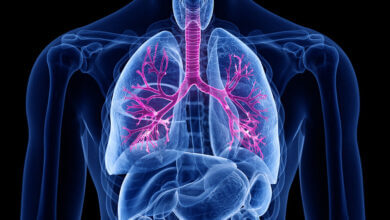Pneumonectomy & Quality of Life: What Patients Need to Know

The excision of an entire lung, known as pneumonectomy, is a surgical intervention commonly utilized to address lung cancer, although it may also be required for other ailments like tuberculosis or extensive lung trauma. While pneumonectomy is a major surgery with significant risks, it can be a life-saving procedure for patients who are facing serious lung diseases. However, it also comes with some side effects that affect the quality of life.
In this article, we will provide a detailed overview of pneumonectomy, including its indications, risks, effects on quality of life, as well as the steps patients can take to prepare for the procedure and manage their recovery.
Related article:
What is Practicum? A Complete Guide
What is Pneumonectomy?
A surgical intervention that involves the complete removal of one lung is known as pneumonectomy. This is a significant surgical procedure that usually requires general anesthesia, and may necessitate an incision in the chest wall to gain access to the lung. Once the lung is removed, the remaining lung and surrounding tissues are sutured closed, and the patient is carefully monitored during recovery.
Common Reasons for Performing a Pneumonectomy
There are a number of conditions that may require a pneumonectomy, including tuberculosis, lung cancer, or chronic obstructive pulmonary disease (COPD), and emphysema. As for lung cancer, pneumonectomy may be necessary to remove all or most of the cancerous tissue in the lung. For other conditions, such as tuberculosis or COPD, a pneumonectomy may be necessary to remove damaged or diseased tissue in the lung that is impacting the patient’s breathing and overall health.
Related article:
What Personal Injury Lawyers do? Everything you need to know
Overview of the Surgical Procedure
The pneumonectomy procedure typically involves several key steps. First, the patient is placed under general anesthesia, and a breathing tube is inserted to ensure that the patient’s airway is secure during the surgery. The surgeon then makes an incision in the chest wall to access the lung, and carefully removes the lung while preserving surrounding tissues as much as possible.
Once the lung is removed, the remaining lung and tissues are carefully sutured closed, and the patient is closely monitored during the immediate post-operative period.
Diagnostic Tools and Tests for Pneumonectomy
A comprehensive assessment of a patient’s medical records, symptoms, and findings from diagnostic exams typically informs the decision to proceed with a pneumonectomy. Some of the tests that may be used to diagnose lung conditions and determine whether a pneumonectomy is necessary include chest x-rays, pulmonary function tests, bronchoscopy & CT Scans.
These tests are useful in determining the location and severity of the lung ailment, assessing the patient’s lung function, and examining their overall health.
Related article:
Uncovering the Excellence of Purdue University
Risks and Benefits of Pneumonectomy
As with any major surgical procedure, there are risks and benefits associated with pneumonectomy. The benefits of pneumonectomy include the potential for improved lung function and overall health, as well as the potential for extended survival in cases of lung cancer. However, there are also significant risks associated with the procedure, including bleeding, infection, and pulmonary edema.
Patients who are contemplating pneumonectomy should engage in a conversation with their healthcare provider to review the possible advantages and drawbacks of the intervention, thereby empowering them to make a well-informed decision.
Immediate Side Effects of Pneumonectomy
The immediate side effects of pneumonectomy on a routine life can be profound. Patients can undergo physical symptoms, such as fatigue, chest pain, and shortness of breath, which can restrict their capacity to carry out daily activities like dressing, climbing stairs or even walking. Additionally, emotional and psychological symptoms like depression, fear of outbreak and panic attacks may also be encountered by the patients.
Related article:
Exploring the Chamberlain University |A Comprehensive Guide to Campus Life
The social impact of pneumonectomy can be significant as well, as patients may have to give up certain social activities or relationships due to physical limitations or concerns about their health.
Long-Term Side Effects on Pneumonectomy
The long-term effects of pneumonectomy on routine life are also important to consider. Patients who have undergone pneumonectomy are at an increased risk of respiratory infections and may have limitations on their ability to exercise. These limitations can impact a patient’s ability to participate in social activities or return to work.
Psychologically, patients may struggle with adjustment to life with one lung and may experience ongoing fear of recurrence or anxiety about their health. The social impact of pneumonectomy in the long term can include changes in employment or social activities, as well as difficulty maintaining relationships due to health concerns.
Related article:
Keiser University | A Complete Guide
Coping Strategies for Patients
Coping strategies for patients can include pulmonary rehabilitation, which can help patients improve their lung function and regain physical strength. Emotional support can also be important, such as counseling or support groups. Patients should also practice self-care and monitor for potential complications, such as infections or blood clots. Healthcare professionals play an important role in helping patients adjust to life after pneumonectomy and should provide guidance and support as needed.
Procedure and Recovery
Once the patient is under anesthesia, the surgical team will make an incision in the chest and carefully remove the affected lung. The remaining lung tissue will then be repositioned to fill the space left by the removed lung. Depending on the extent of the surgery, a chest tube may be inserted to help drain excess fluids and air from the chest cavity.
Following the surgery, the patient’s chest incision will be secured with either sutures or staples, after which they will be transferred to a recovery room. Subsequently, the patient will undergo close monitoring in the hospital for a few days. Pain management, wound care, and respiratory therapy will be provided to help patients manage pain and reduce the risk of complications.
Related article:
Exploring Arizona State University | A Comprehensive Guide for Students
It is common for patients to experience shortness of breath, coughing, and discomfort in the chest and shoulder area in the days following surgery.
Risks and Complications
While pneumonectomy is generally considered safe, there are risks associated with any major surgical procedure. Potential complications include bleeding, infection, pulmonary edema, and respiratory failure. There is also a risk of blood clots forming in the legs or lungs, which can be life-threatening if not treated promptly.
To minimize these risks, patients are carefully screened before the surgery to ensure they are healthy enough to undergo the procedure. During the surgery, the surgical team takes measures to prevent bleeding and infection. After the surgery, patients receive pain medication, antibiotics, and respiratory therapy to help prevent complications and promote healing.
Related article:
Alternative Treatments and Future Directions
While pneumonectomy is often necessary for the treatment of serious lung diseases and cancers, there are alternative treatments available that may be appropriate for some patients. For example, chemotherapy, radiation therapy, and immunotherapy may be used to shrink tumors and reduce the need for surgery. In some cases, minimally invasive procedures such as video-assisted thoracic surgery (VATS) may be used to remove small tumors.
Researchers are also continually exploring new treatments and techniques for lung diseases and cancers. For example, robotic-assisted surgery and other minimally invasive techniques are being developed that may offer patients faster recovery times and fewer complications. Immunotherapy and targeted therapies are also being investigated as potential treatments for lung cancer.
Our Verdict
Pneumonectomy is a major surgical procedure that involves the removal of a lung. While it is a complex and risky procedure, it is often necessary for the treatment of serious lung diseases and cancers. Patients who are considering pneumonectomy should work closely with their healthcare providers to understand the risks and benefits of the procedure, and to develop a plan for preparing for and recovering from surgery.
By working together, patients and their healthcare teams can help ensure the best possible outcomes and quality of life following pneumonectomy.






